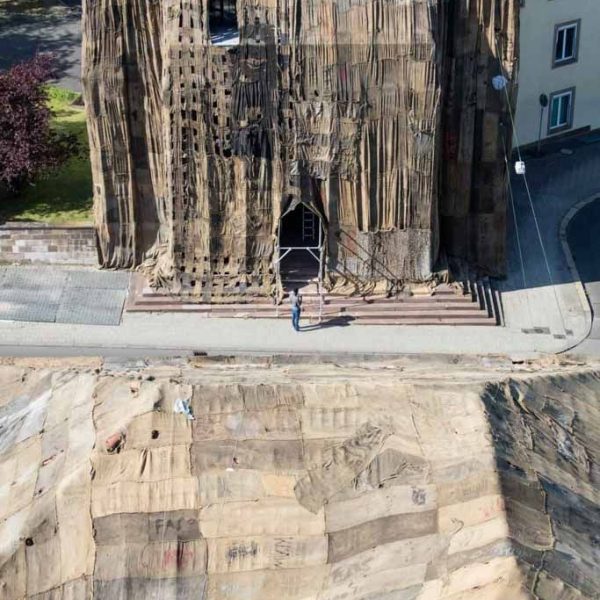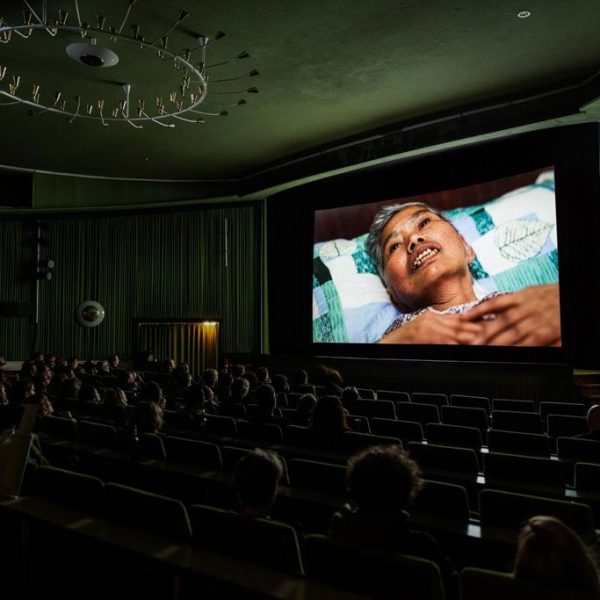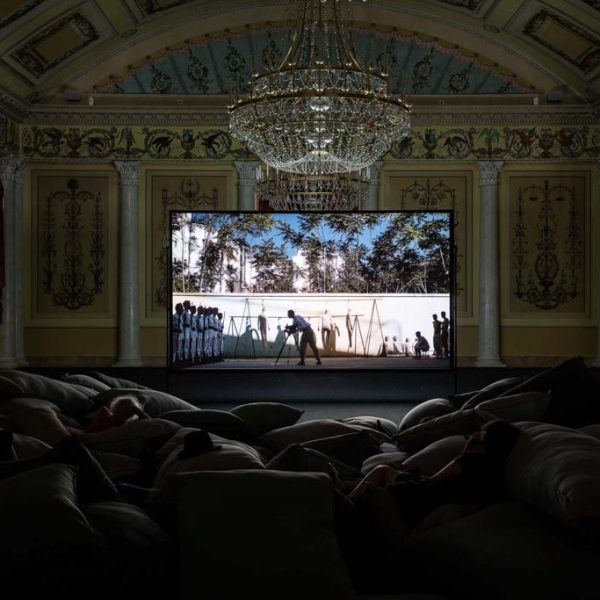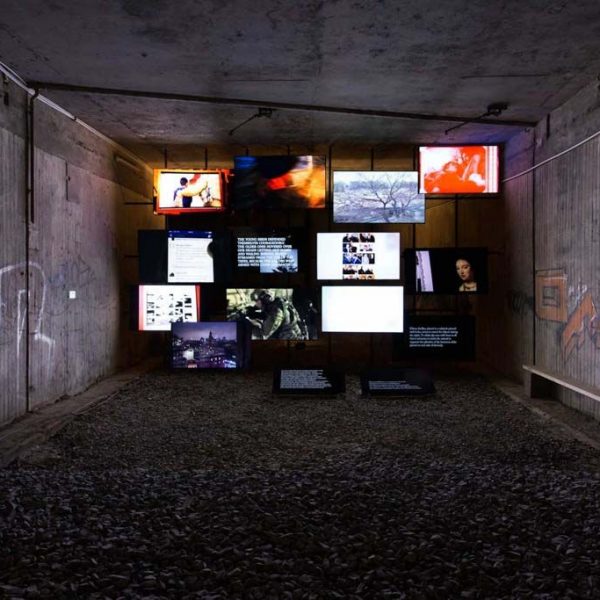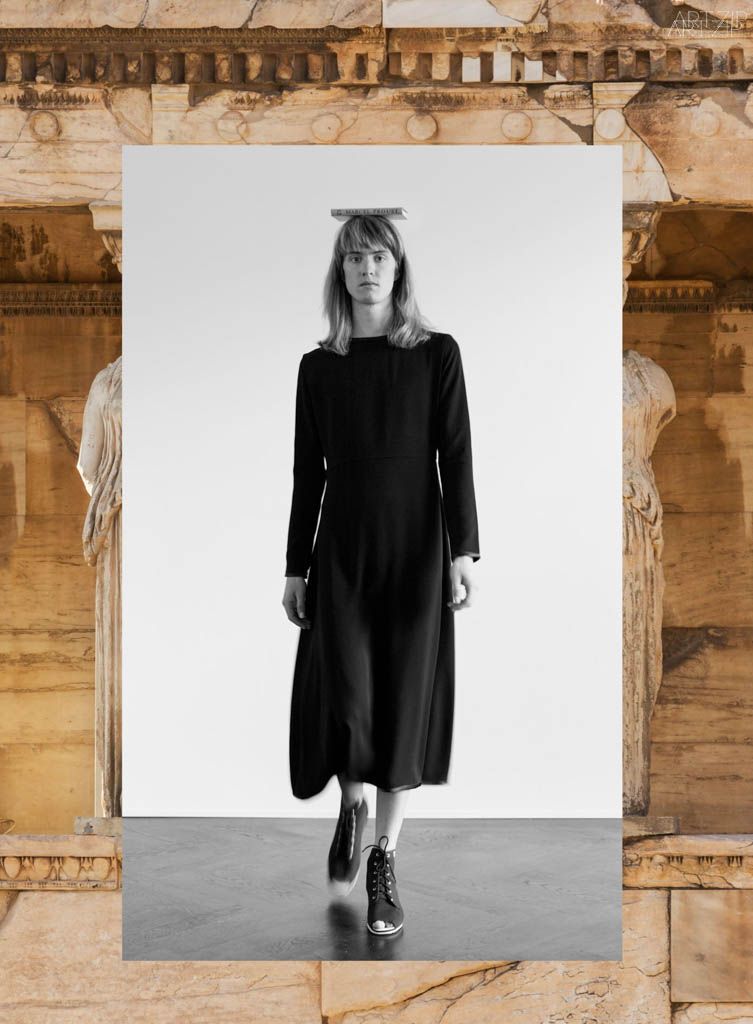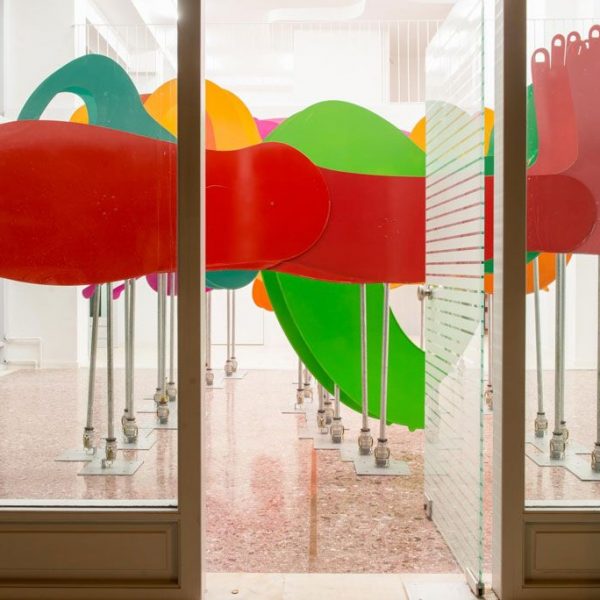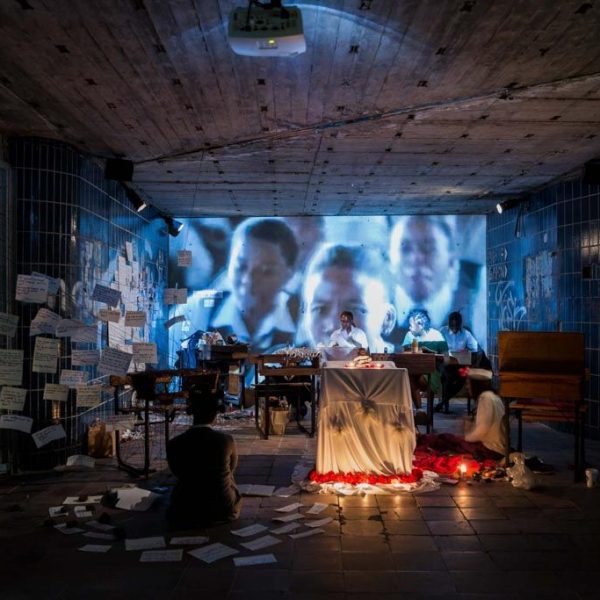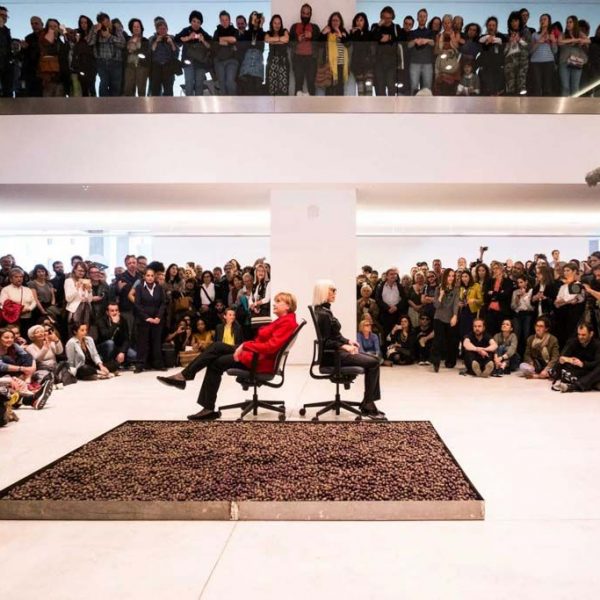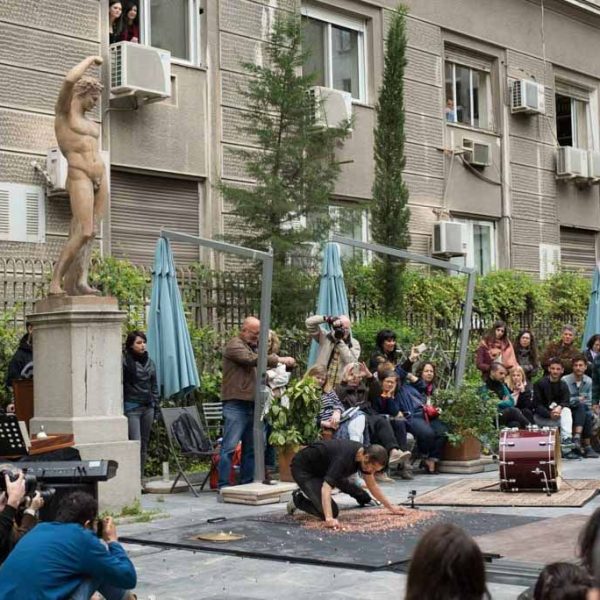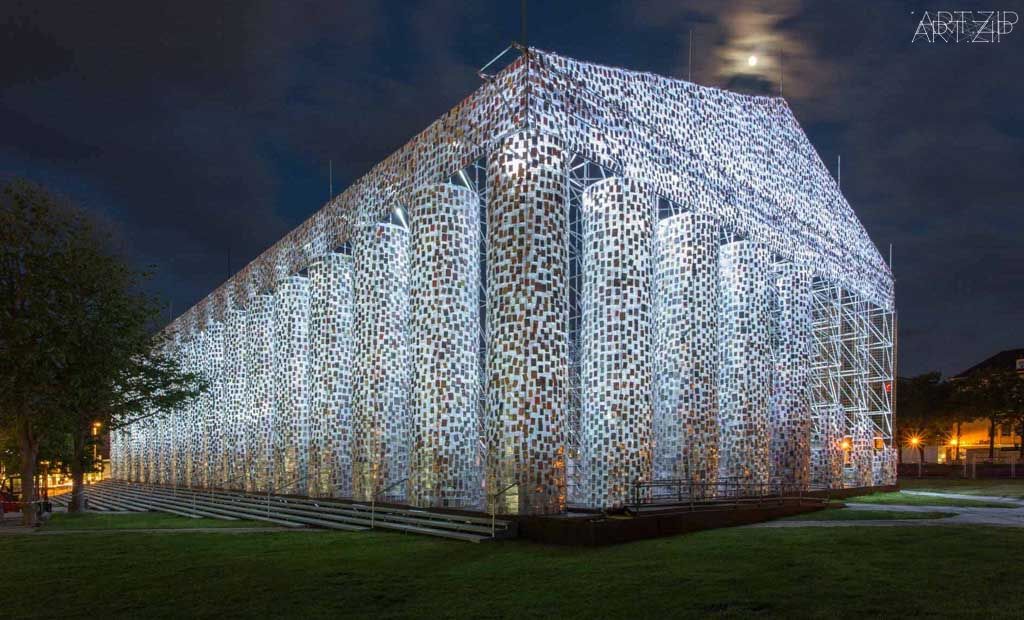
June 10, 2017, the documenta 14 exhibition opens in Kassel. Over 160 international artists present works conceived for documenta 14 at more than thirty different sites, public institutions, squares, cinemas, and university locations.
Orientation at documenta 14 Artistic director Adam Szymczyk proposes that visitors follow a parcour of the venues of documenta 14 in Kassel. It begins at the former underground train station (KulturBahnhof) and extends through the Nordstadt district across Friedrichsplatz in a southerly direction to the Torwache, the unfinished city gate.
While documenta 14 opens in Kassel, the exhibition has been on open in Athens since April 8. In Athens, documenta 14 has already reached a total of 244,000 visits to the various exhibition locations, works in public space, and numerous events and performances taking place across the city.
Highlights in Kassel
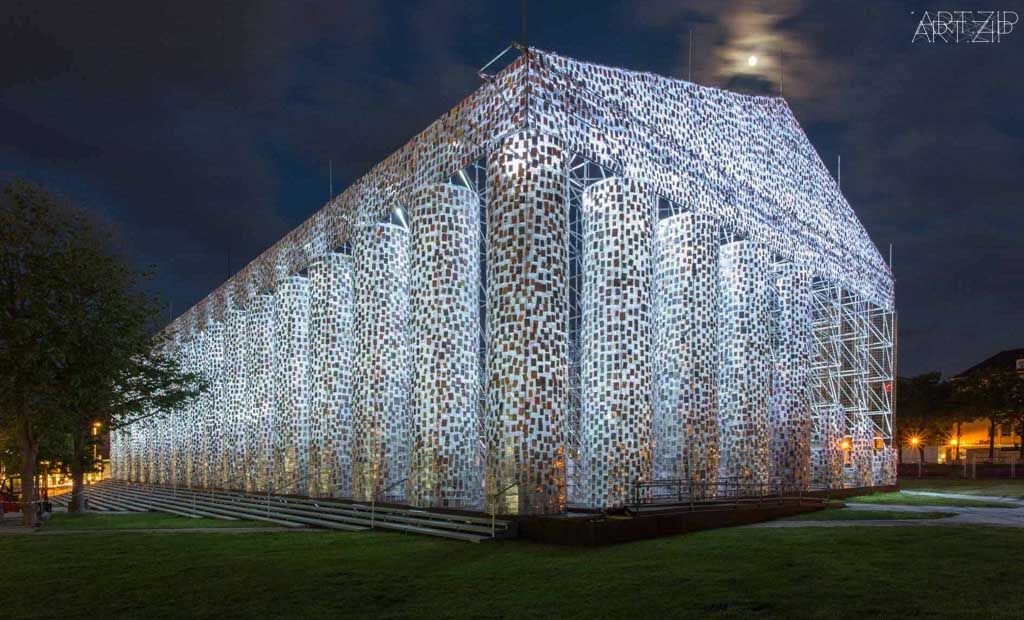
d14 Martha Minujín The Parthenon of Books © Roman Maerz 008
Highlights in Athens
In 1955, the Kassel painter and academy professor Arnold Bode endeavoured to bring Germany back into dialogue with the rest of the world after the end of World War II, and to connect the international art scene through a “presentation of twentieth-century art.”
He founded the “Society of Western Art of the 20th Century” in order to present art that had been deemed by the Nazis as degenerate as well as works from classical modernity that had never been seen in Germany in the destroyed Museum Fridericianum.
The first documenta was a retrospective of works from major movements (Fauvism, Expressionism, Cubism, the Blaue Reiter, Futurism) and brilliant individualists such as Pablo Picasso, Max Ernst, Hans Arp, Henri Matisse, Wassily Kandinsky, and Henry Moore. In this journey through the art of the first fifty years of the century, German founders of modern art such as Paul Klee, Oskar Schlemmer, or Max Beckmann were presented alongside classics of modernism.
An enormous hunger to compensate for the lack of information about international tendencies in art motivated 130,000 visitors to come to Kassel for the exhibition, which acted as both a survey and a forum for contemporary art.
Encouraged by this unexpected success, Bode planned the second exhibition in 1959, thus establishing the exhibition cycle of documenta. Since 1959, the exhibition has been organised by a limited liability company with the City of Kassel and the State of Hesse as shareholders.
Arnold Bode led the exhibition up until documenta 4 in 1968, in cooperation with such renowned art historians such as Werner Haftmann, Will Grohmann, Werner Schmalenbach, and Max Imdahl. documenta increasingly became a seismograph of developments in contemporary art.
A new format for the exhibition’s organisation started in 1972, with Harald Szeemann appointed as “Secretary General.” On behalf of the board of documenta gGmbH, an international jury is assembled to appoint the Artistic Director for each exhibition. In 1997, Catherine David became the first woman to direct documenta.
Each documenta takes its character from the ideas and concept of its Artistic Director and is therefore not only a forum for current trends in contemporary art but a place where innovative and standards-setting exhibition concepts are trialled. In each edition, documenta has played a leading role in taking the international discourse about art in new directions. Over the past decades, documenta has established itself as an institution that goes far beyond a survey of what is currently happening, inviting the attention of the international art world every five years for this “museum of 100 days.” The discourse and the dynamics of the discussion surrounding each documenta reflects and challenges the expectations of society about art.

